Eleven Questions: An Interview With Stephen Frink |
NPN Editor-in-Chief Richard Bernabe recently interviewed Florida photographer, Stephen Frink. Stephen is among the world's most frequently published underwater photographers and is a Canon EXPLORER OF LIGHT, the only marine specialist within this very elite group of photographers.
1) This is a standard "first question" for most of our interviews but each story is unique. How did you get your start in a photography career?
I was in graduate school in California, getting a MA in experimental psychology and I had time to take some photo classes for fun. †In the very first class, Basic Photography 101, I was totally captured by the process of black-and-white photography and totally sidetracked from psychology. †The underwater part happened later, after I got certified in order to get a part-time job cleaning boat hulls. †The hook was photography, and the underwater part at the time was more incidental to the process. †If I didnít find a UW photo specialty I would have done something else in photography. †The passion was that strong and engaging.
In fact, after graduate school I lived in Hawaii for a while, and tried underwater photography at a very rudimentary level. I definitely have nothing worth keeping from that era, except as a curiosity. After I left Hawaii I moved to Colorado and worked as a color lab technician in a commercial photo studio. I pretty well dropped out of diving during those years, and it was just a chance holiday to Key Largo, Florida to visit an old buddy who was doing treasure diving there that rekindled my interest in underwater and suggested a career might be possible. This was spring break 1978, and by November of that year Iíd moved to Key Largo to open a small E-6 film processing and camera rental business in space I rented from Ocean Divers dive shop. Iím still in that same building, although it is our building now and E-6 film processing is long gone!
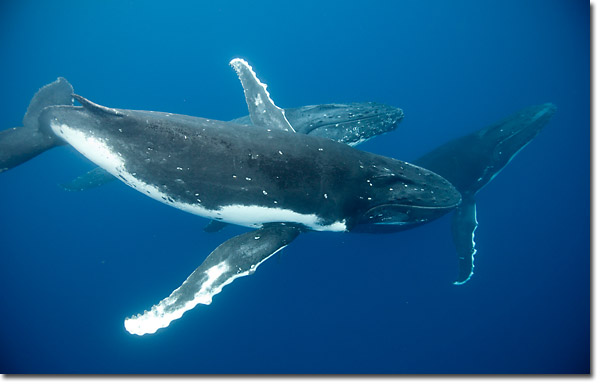
2) What is it about underwater photography, in particular, that sparked an interest in you?
I was a competitive swimmer as a kid, all the way through college actually. So, being in the water was a pretty natural thing. Once I learned photography was so powerful for me, it was only natural to try underwater. I bought a Nikonos II from a surfer in Seal Beach, CA and took really crappy available light shots on my beach dives there. Then I added a Vivitar 283 flash in an Ikelite housing while living in Hawaii and got only marginally better results. It was only after I moved to Key Largo and bought my first real housing, a Sea and Sea housing for a Bronica medium format SLR, that I began to get results good enough to be noticed. I think it was all about capturing marine life to begin with, but with my first assignment I realized how important it was to be able to photograph people well underwater, and that has been my commercial emphasis ever since.
3) Aside from the additional equipment and possibly learning SCUBA, what sort of learning curve is involved with underwater photography?
Biggest challenge in underwater photography is from the physics, and knowledge of the science is crucial to allow one to execute the art. Water is 800-times more dense than air and offers cyan filtration. †It means we have to get close and use artificial light in order to render color on the finished photograph. †Once you can accomplish proximity, then it becomes a matter of technique and timing and a personal vision.
In those old days I had the luxury of shooting in the morning on the Ocean Divers dive boat, and then processing the film in the afternoon. I saw what I did right and wrong right away, and could go out the next day and try to do better. Of course, digital shooters enjoy this immediacy now, but back in the late 1970s and early 1980s this was a huge benefit to me in terms of accelerating a learning curve. I think it helped also that I didnít make much money back in the lab in Colorado, because it was pretty lean those first few years as a photo pro in Key Largo. Being acclimated to poverty was helpful there at the start.
4) Can you describe the primary challenges associated with doing photography underwater? The rewards?
I donít think scuba diving is a particularly dangerous sport, but if you do it as long as I have it is possible to get hurt. Iíve been bent a few times, but gratefully never badly bitten by sharks or lost at sea. Still, I think you have to recognize there are a few physical challenges associated with diving. Part of the reward is the places you get to go to photograph the best coral reefs. The travel has been wonderfully enlightening and exciting.
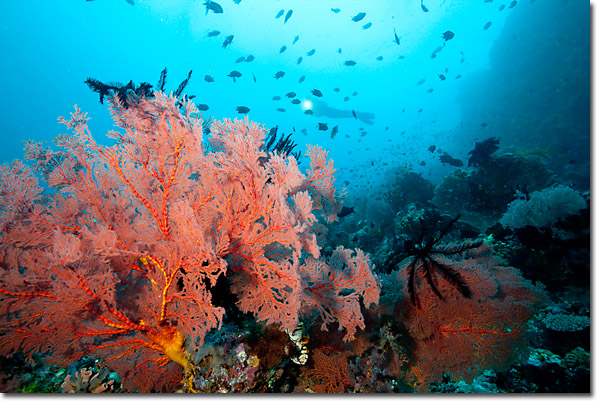
5) What percentage of your photography sales are strictly nature and what percentage is people/lifestyle?
Probably 65% people and lifestyle and 35% natural history and marine life.
6) Which sell better?
The shots with model-released people tend to be more lucrative, as a generalization. But, even in the scuba niche those kinds of images age more quickly due to scuba fashions. Marine life lasts longer and so may have greater long-term marketability. Over a 30-year career in stock photography, for me, shots with people are better business than shots of fish.
7) You operate Waterhouse Tours which offers tour for underwater photographers. How much experience must one have before considering attending one of your events?
It depends on the event, really. I teach very highly advanced digital photo seminars, and those require a couple of years experience shooting with a digital SLR. I have a very talented Photoshop guru that team teaches these classes with me, Eddie Tapp and we both expect our students to have a modest grasp of the fundamentals before enrolling. It is for their sake as well as the benefit of the others in the class that we have at least a reasonably cohesive class in terms of experience.
The photo tours donít require any particular photographic experience at all, and many of our guests donít take underwater photos. They should be competent divers, but going on my photo tours as a non-photographer works just fine for our non-shooters, as well as the other photographers on board. Having less competition for any particular photo-opportunity is not really a bad thing, and it brings nice balance to the tours in terms of diversity of interest.
8) What are some of the upcoming locations?
Weíll be in the Philippines in a couple of weeks, to Dumaguete and Tubbataha. Then Alaska this summer, and Wakatobi, Indonesia in the fall. Iíll also be doing another one of my Shark Shootouts at Stuart Coveís Dive Bahamas this fall as well. We are just now setting up a trip to the Far North Great Barrier Reef, in the Australiaís Great Detached Reef region, almost all the way to Papua New Guinea. I was there a few years ago, but a cyclone chased us out and so Iím eager to complete that destination! In spring 2012 weíll be aboard NAIíA in Fiji and then back to another region in the Philippines.
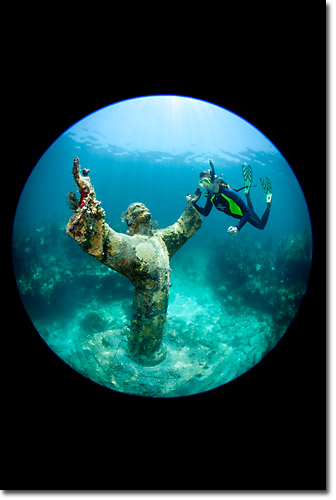
9) Your loggerhead turtle image landed on the cover of Newsweek magazine last June under the most unfortunate of circumstances accompanied by the title, "What The Spill Will Kill." We've seen plenty of images from above the waterline on this environmental tragedy, but what perspective does it give you as an underwater photographer and resident of South Florida?
We had a very real fear that the mass of oil spewing from the sea might get carried in the currents and affect our coral reefs. I wrote about it on my blog in June of 2010 at a time when we really didnít know if our coral reefs were truly in peril. Seeing the images of the amount of oil being flushed into the sea, and the sheer volume of toxic dispersants being used, it was hard to imagine anything other than sheer disaster would be the result. But, the oceanic currents favored us and no oil got around the tip of Florida.
Yet, just this week dead baby dolphins were washing up on the shores of Alabama and Mississippi. It is hard to imagine this is not somehow related to the oil spill, and they are doing forensic necropsies to try to find out. We wonít know for decades how much damage was caused by the oil spill, but we know with certainty what a narrow range of conditions are necessary to perpetuate a coral reef. Temperature and salinity and acidity and proper nutrients all collectively define the health of a coral reef. An underwater river of oil would be instantly catastrophic, trumping all other hazards.
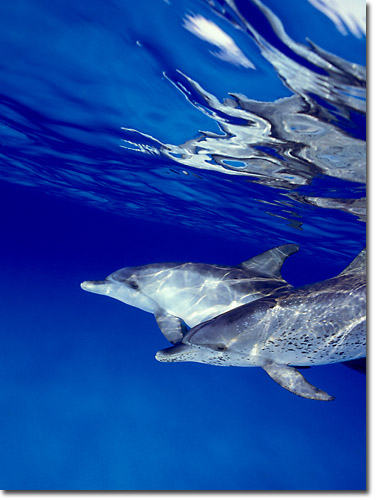
10) What is your favorite non-essential piece of equipment or gear?
A DAN insurance card. Iíve needed to be evacuated from remote regions, and having dive insurance with DAN is crucial. While getting hurt while diving is very easy to avoid, those who are so totally immersed in image capture might miss a few cues that otherwise might keep them out of trouble. Aside from that, a comfortable black-skirted mask and an efficient viewfinder on the housing. †It is all about the eye, after all, and you need the tools that translate the mindís eye to digital capture.
11) What kinds of cameras and lenses do you like to use?
I am a Canon Explorer of Light, so it should be no surprise I am a very loyal and satisfied Canon shooter. †I presently shoot the Canon 1DsMKIII, 1DMKIV, and MK5DII. †Even my knock-around point-and-shoot is a Canon, a G12. †For lenses I now use 14, 15, 16-35II, 24-70, 50 macro, 100 macro, 70-200, 100-400. †That covers most of what I need, but I have 2 new lenses on my shopping list for 2011. †The 50mm 1.2 and new 8-15mm fisheye zoom. †All cameras are in SEACAM housings.
Comments on NPN nature photographer interviews? Send them to the editor. NPN members may also log in and leave their comments below.
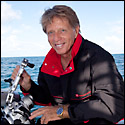 Steven Frink, in addition to being one of the most frequently published underwater photographer in the world, is the publisher of a beautiful new quarterly magazine for the Divers Alert Network, ALERT DIVER. Previously, his editorial work appeared in SCUBA DIVING as Director of Photography. Frink has authored a coffee table book entitled WONDERS OF THE REEF, and teaches the Stephen Frink School of Underwater Digital Imaging in his home waters of Key Largo, Florida.
Steven Frink, in addition to being one of the most frequently published underwater photographer in the world, is the publisher of a beautiful new quarterly magazine for the Divers Alert Network, ALERT DIVER. Previously, his editorial work appeared in SCUBA DIVING as Director of Photography. Frink has authored a coffee table book entitled WONDERS OF THE REEF, and teaches the Stephen Frink School of Underwater Digital Imaging in his home waters of Key Largo, Florida.
Clients for assignment photography over the past 3 decades have included Canon, Nikon, Victoria's Secret, Aqua Lung, Oceanic, Scubapro, Mercury Marine, Jantzen, Alcan Aluminum, R.J. Reynolds, Seaquest, Henderson Aquatics, Club Med, major ad agencies, and scores of resorts and live-aboard dive boats throughout the world. Rolex Watch Company has also engaged Frink for product endorsement.
Other Frink enterprises include a dive travel company, WaterHouse Tours and Reservations and a stock photo agency, Stephen Frink Collection. Stephen Frink Photographic is the North and South American distributor for the Austrian camera housing manufacturer SEACAM.
Links:
Explorers of Light - http://www.usa.canon.com/dlc/controller?act=ArtistsListAct
Portfolio - http://www.stephenfrinkphoto.com
SEACAM - http://www.seacamusa.com
Travel - http://www.waterhousetours.com